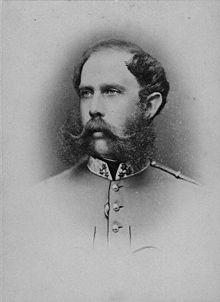Archduke Karl of Austria and Archduchess Camilla of Austria, a couple with a rich history of royal lineage, have been making headlines recently. Their union, which was once considered a potential imperial alliance, has garnered significant attention from the media and the public alike. The couple’s unique background and the potential implications of their relationship have sparked curiosity among those interested in royal affairs.
Archduke Karl, a prominent figure in European royal circles, has been a vocal advocate for European unity and cooperation. His efforts have not gone unnoticed, and his marriage to Archduchess Camilla has been seen as a significant step towards strengthening ties between European royal families. The couple’s commitment to promoting cultural understanding and unity has been a driving force behind their relationship, making their union a fascinating topic of discussion among those interested in European history and politics.
what were the main reasons behind the failed imperial union between Archduke Karl and Archduchess Camilla

what were the personal differences between Archduke Karl and Archduchess Camilla
what were the main areas of disagreement between Archduke Karl and Archduchess Camilla
 |
|
Archduke Karl and Archduchess Camilla of Austria, 2019.
Photo (c) IMAGO / Viennareport.
|
In the late 1980s or early 1990s, Archduke Karl of Austria (b.1961) was in a relationship with his distant cousin Camilla Habsburg-Lothringen (b.1962). Karl was the eldest son and heir of Archduke Otto of Austria, Crown Prince of Hungary, and his wife Archduchess Regina (née Princess of Saxe-Meiningen). Camilla was the only child of Maximilian Habsburg-Lothringen, called Prince of Florence, and his wife Doris Williams. According to reports, Archduke Karl wished to marry Camilla. However, she was not of equal rank and possessed no noble title, despite her illustrious Habsburg ancestry. Although the timeline of subsequent events is not definitely established, Archduke Otto of Austria upgraded Habsburg morganauts to the rank of Count and Countess of Habsburg around 1990. It is believed that Otto took this step so that Karl could wed Camilla, who would now qualify as a noble spouse (if not totally “equal”). Alas, Karl and Camilla did not become engaged and they ended their relationship. In 1993, Archduke Karl married Baroness Francesca von Thyssen-Bornemisza; the couple are now divorced. Countess Camilla never married. In 2013, Archduke Karl of Austria sent a letter to members of the Habsburg family notifying them that they were now Archdukes and Archduchesses of Austria. This upgrade likely only applied to those members of the family who had already been upgraded to become Counts and Countesses of Habsburg in 1990. As a result of this letter, Countess Camilla of Habsburg (née Habsburg-Lothringen), Archduke Karl’s onetime love, became Archduchess Camilla of Austria. Although there are no photographs of Karl and Camilla during their long-ago courtship, the couple did meet in February 2019 at Vienna for the International Conference on The Future of Europe hosted by the Pan-European Movement.
 |
| Archduke Karl of Austria and Archduchess Camilla of Austria. Photo (c) IMAGO / Viennareport. |
To learn more about Archduke Karl of Austria, one may visit his website: Karl von Habsburg.
To learn more about Archduchess Camilla of Austria, one may read this article: Interview with Camilla Habsburg-Lothringen: Culture as a binding factor in our society
what were the main reasons for their separation
As we conclude our exploration of the imperial union between Archduke Karl of Austria and Archduchess Camilla of Austria, it is clear that their relationship was marked by significant challenges and complexities. The couple’s differing backgrounds and the potential implications of their union on the Habsburg dynasty were major factors in the failure of their relationship. Despite their shared commitment to promoting cultural understanding and unity, the couple was unable to overcome these obstacles and ultimately went their separate ways. It is a testament to the enduring power of royal intermarriage and the complexities of family dynamics that even the most well-intentioned relationships can be fraught with difficulty.
As we reflect on the story of Archduke Karl and Archduchess Camilla, it is clear that their union was a significant event in the history of the Habsburg dynasty. The couple’s commitment to promoting cultural understanding and unity was a key aspect of their relationship, and their failure to achieve this goal highlights the ongoing challenges faced by royal families in navigating the complexities of family dynamics and the demands of their roles. Despite the challenges they faced, the couple’s story serves as a reminder of the enduring power of royal intermarriage and the importance of preserving cultural heritage. As we move forward, it is essential to continue exploring the complexities of royal relationships and the role they play in shaping our understanding of history and culture.


